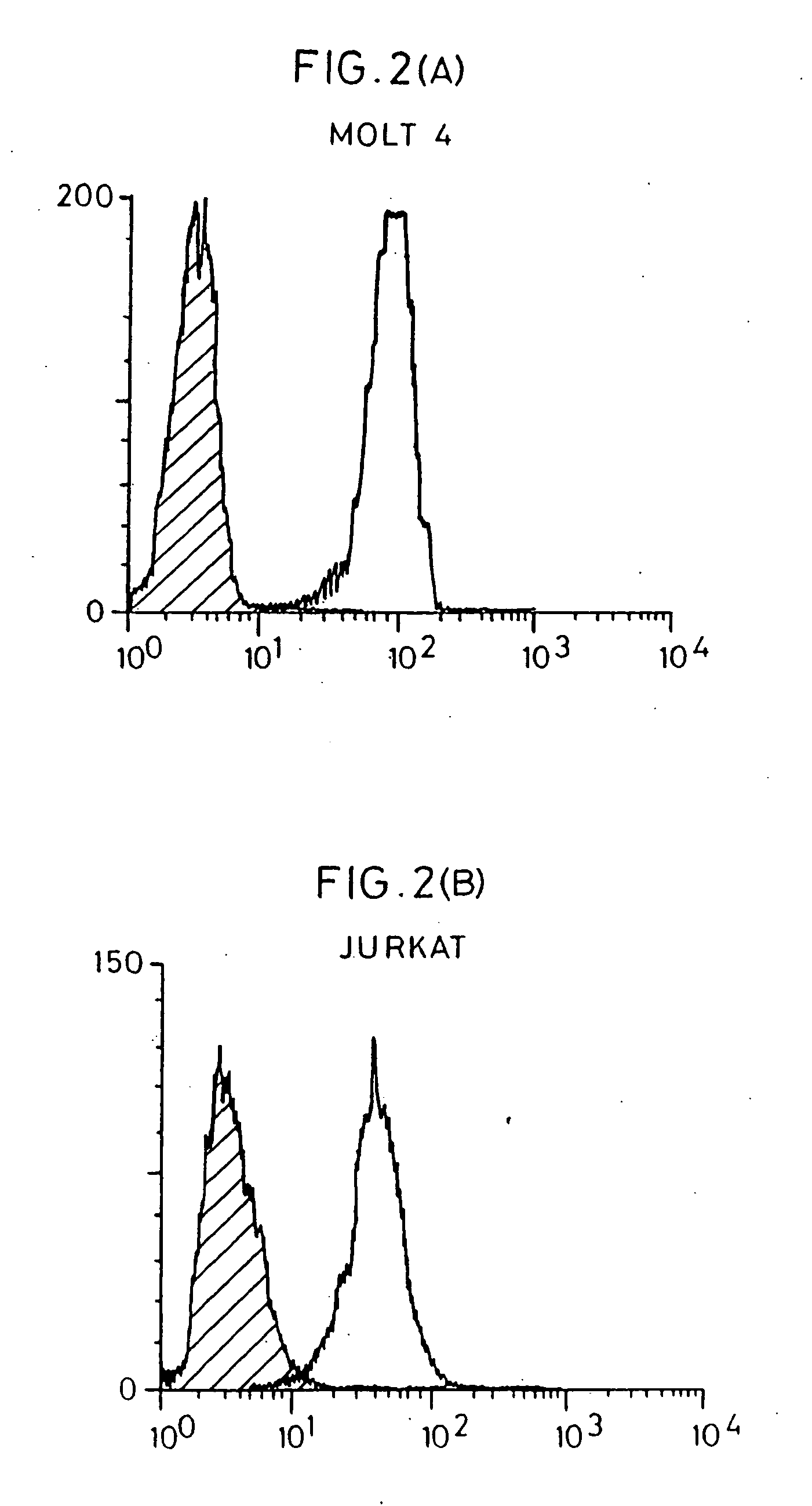Binding protein
a technology of binding protein and hcv, which is applied in the field of binding protein, can solve the problems of inability to propagate hcv in tissue culture, hinder hcv research very much, etc., and achieve the effect of reducing the infectivity of the virus and preventing the infection process
- Summary
- Abstract
- Description
- Claims
- Application Information
AI Technical Summary
Benefits of technology
Problems solved by technology
Method used
Image
Examples
Embodiment Construction
[0075] The arrangement of the detailed description is as follows:
1.General Description132.Cellular Assay132.1.FACS analysis of cells binding to E2132.2.Effect of E2 modification on binding152.2.1.E2 reduction162.2.2.E2 deglycosylation162.3.Monoclonal antibody production173.Preparation of 24 kd putative receptor173.1.24 kd protein preparation from MOLT-4 cells173.1.1.Membrane purification173.1.2.Plasma membrane purification183.2.Hyperexpressing MOLT-4 cells204.Characterisation of Receptor204.1.Western blot protocol204.1.1.Membrane proteins214.1.2.Plasma membrane proteins224.1.3.Western blot of PBMC cells234.2.Cell surface expression of receptor234.3.Effect of enzymes on 24 kd protein binding244.3.1.Flow cytometry244.3.2.Western blot on MOLT-4 / N-Glycosidase F264.4.Effect of reducing condition on binding265.Optimising Purification275.1.Immunoprecipitation275.2.Ammonium Sulphate Fractionation305.3.Hydrophobic Interaction Chromatography315.4.Acetone precipitation326.Sequencing and clon...
PUM
| Property | Measurement | Unit |
|---|---|---|
| concentrations | aaaaa | aaaaa |
| pH | aaaaa | aaaaa |
| pH | aaaaa | aaaaa |
Abstract
Description
Claims
Application Information
 Login to View More
Login to View More - R&D
- Intellectual Property
- Life Sciences
- Materials
- Tech Scout
- Unparalleled Data Quality
- Higher Quality Content
- 60% Fewer Hallucinations
Browse by: Latest US Patents, China's latest patents, Technical Efficacy Thesaurus, Application Domain, Technology Topic, Popular Technical Reports.
© 2025 PatSnap. All rights reserved.Legal|Privacy policy|Modern Slavery Act Transparency Statement|Sitemap|About US| Contact US: help@patsnap.com



